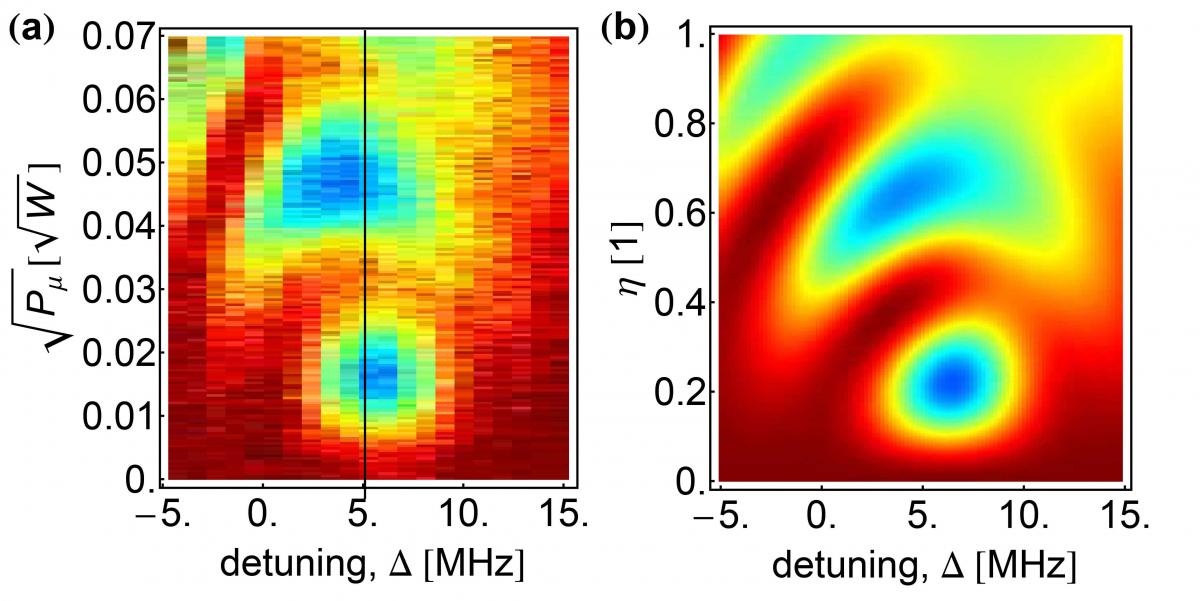Independent of the physical system, experiments that explore quantum mechanical effects at the single quantum limit need to fulfil a set of different criteria. Various systems such as neutral or charged atoms, superconducting circuits, nuclear spins, NV-centers or quantum dots, offer a diversity of physical properties to meet these requirements. For example, an important prerequisite for any quantum mechanical experiment is the fast and coherent manipulation of a set of quanta at time scales shorter than the coherence time of the system. However, the strength of one system generally comes with a weakness, e.g. long coherence time is accompanied by slow manipulation rates, limiting the variety of possible experiments. Other systems can have complementary properties, for example fast manipulation but only short short coherence time.
In our experiment we aim to combine the strengths of two physical systems; the long coherence times of highly excited, neutral (Rydberg) atoms and the fast manipulation times of superconducting circuits operating in the microwave regime. In detail, we couple helium Rydberg atoms with principal quantum numbers n ≥ 30 to microwave photons in superconducting coplanar transmission line resonators at cryogenic temperatures. The main challenge in this experiment is to create conditions, under which the Rydberg atoms can be studied in a homogeneous static electric field close to the evanescent mode of the waveguide at the surface.
In 2014, we have achieved an important step towards this goal by observing coherent population transfer between the internal states of an ensemble of 1000 helium atoms in Rydberg states at a distance of 250 µm from a planar gold or superconducting surface at a temperature of 3 Κ [1]. With a repetition rate of 25 Hz, the atoms were excited to Rydberg states by a Nd:YAG pumped, frequency-doubled dye laser (λ ≈ 313 nm) from a supersonic (v = 1700 m/s) beam of metastable (1s)1(2s)11S0 singlet atoms created in an electric discharge. The observed 34s state population varies as a function of microwave amplitude (pulse length: 160 ns) and detuning Δ0 from the field-free transition frequency at ≈ 27.966 GHz. The observed coherent population transfer is not symmetric with respect to the transition frequency at Δ0 = 5 MHz [Fig. 1.2(a)] which is explained by a model taking into account microwave and static electric field gradients over the atom cloud [Fig. 1.2(b)].
In 2015, we develop novel techniques to determine electric and microwave field distributions above patterned surfaces and set up a new helium source that reduces the temperature of the metastable beam using laser cooling. In a next step we plan to combine the two setups and observe the interaction between an ensemble of Rydberg atoms and a superconducting coplanar transmission line resonator.

Figure 1.2: (a) Rabi oscillations for an ensemble of helium Rydberg atoms at a distance of 250 µm above a gold surface as a function of microwave amplitude ∝√Pµ and detuning Δ0, see text. (b) Corresponding simulation with η beeing varied linearly between 0 and 1 as the experimentally set amplitude is varied. The color scale in both panels indicating the population ranges from 0:14 (blue) to 1 (dark red).
Full article: https://journals.aps.org/pra/abstract/10.1103/PhysRevA.90.013414, also in arXiv:1402.7217
[1] T. Thiele, A. Filipp, J. A. Agner, H. Schmutz, J. Deiglmayr, M. Stammeier, P. Allmendinger, F. Merkt, and A. Wallraff, Phys. Rev. A 90, 013414 (2014)


